
Motifs of Tarabucan textiles and what they signify
During the last two months working as a Fashion Design Officer for MISTURA, Bolivia for my mandate, I did anthropological research on two regions of Bolivia – Tarabuco and Chiquitania. Through the research, I came across a community of people commonly known as the Tarabuqueños (in English, Tarbucans). They live in the town of Tarabuco, which is a small town situated at over 10,000 feet in the Andes of central Bolivia. They speak Quechua language.Their costumes are distinctively recognized throughout Bolivia. They derive their inspiration from pre-Hispanic and Spanish colonial costumes. (Fun Fact: Tarabucan men are the only ethnic group in Bolivia who practice the pre-Inca custom of wearing their hair in a long braid or simpa).
Typical attire of Tarabucan men and women.
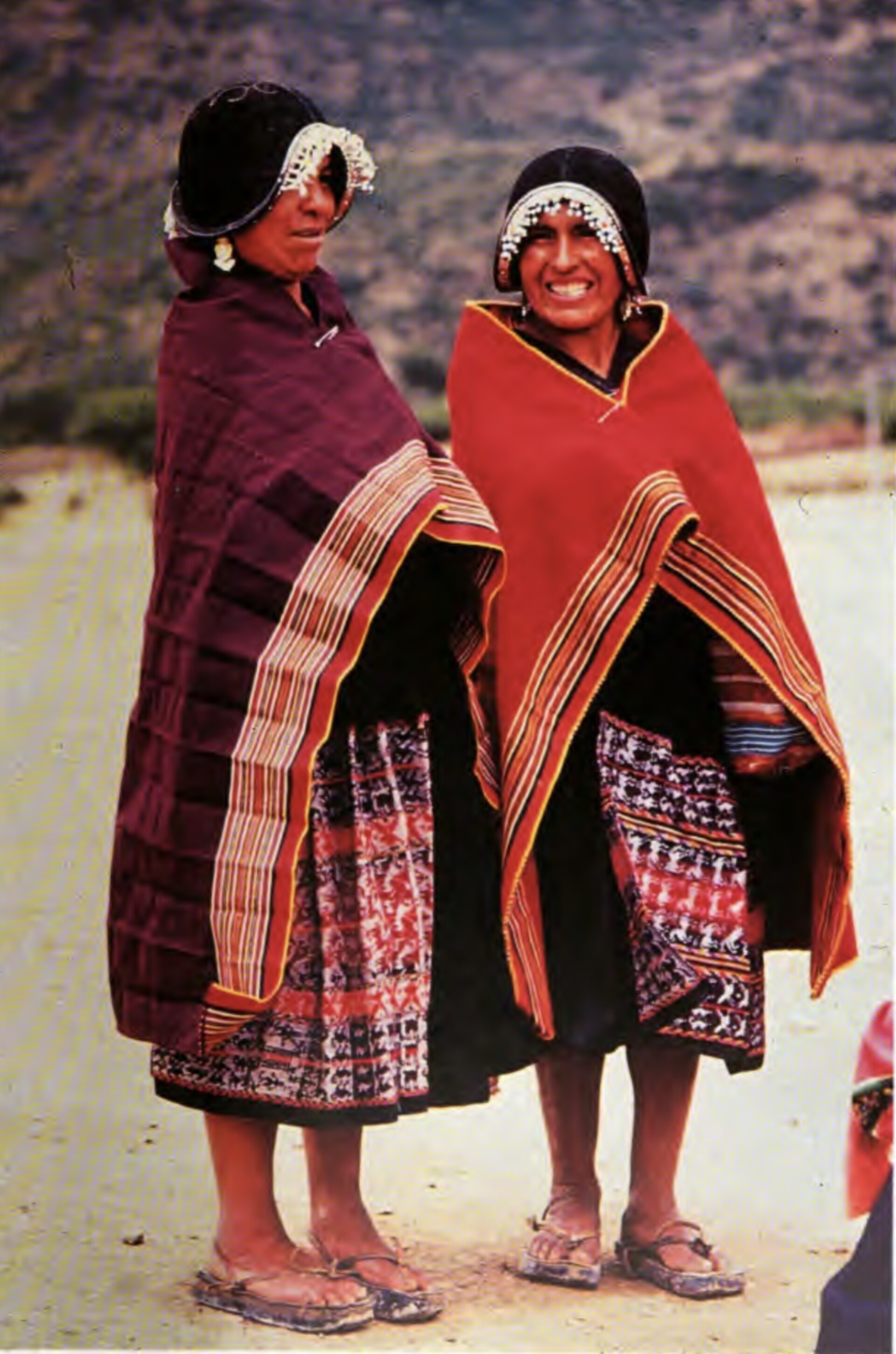
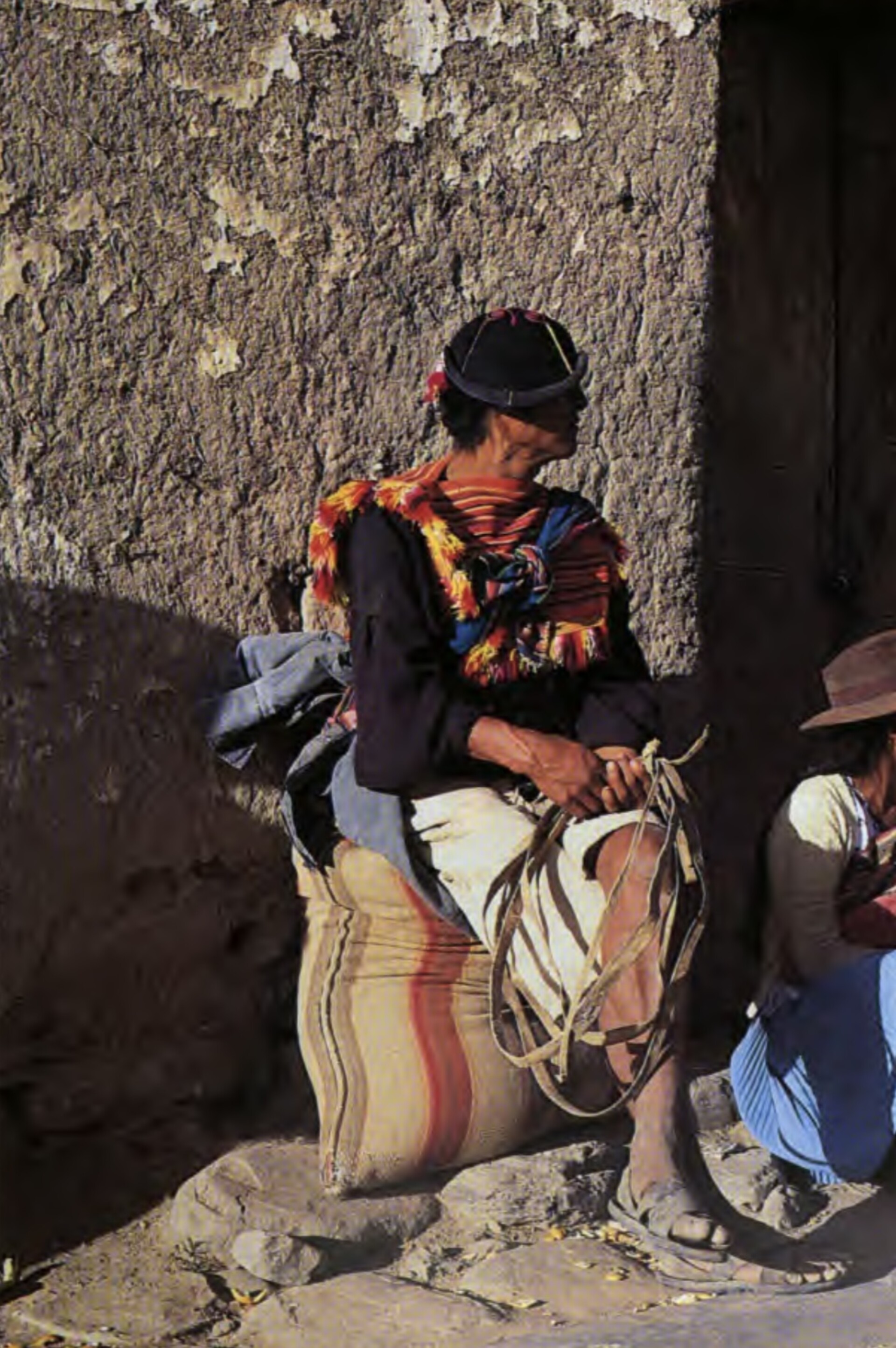
Today I will share what I learned about Tarabuco weaving, focusing on the different motifs and what they symbolise. Tarabucans are excellent weavers and women weave almost all of the costumes and other textiles on an oblique frame loom. Narrow pieces like braid ties(tullmas), little straps (watus), belts (chumpis), etc are woven on a body tension loom or back-strap loom. It is said that Tarabucan women weave their dreams and identities into their textiles.
Image of an Oblique loom and body tension loom.
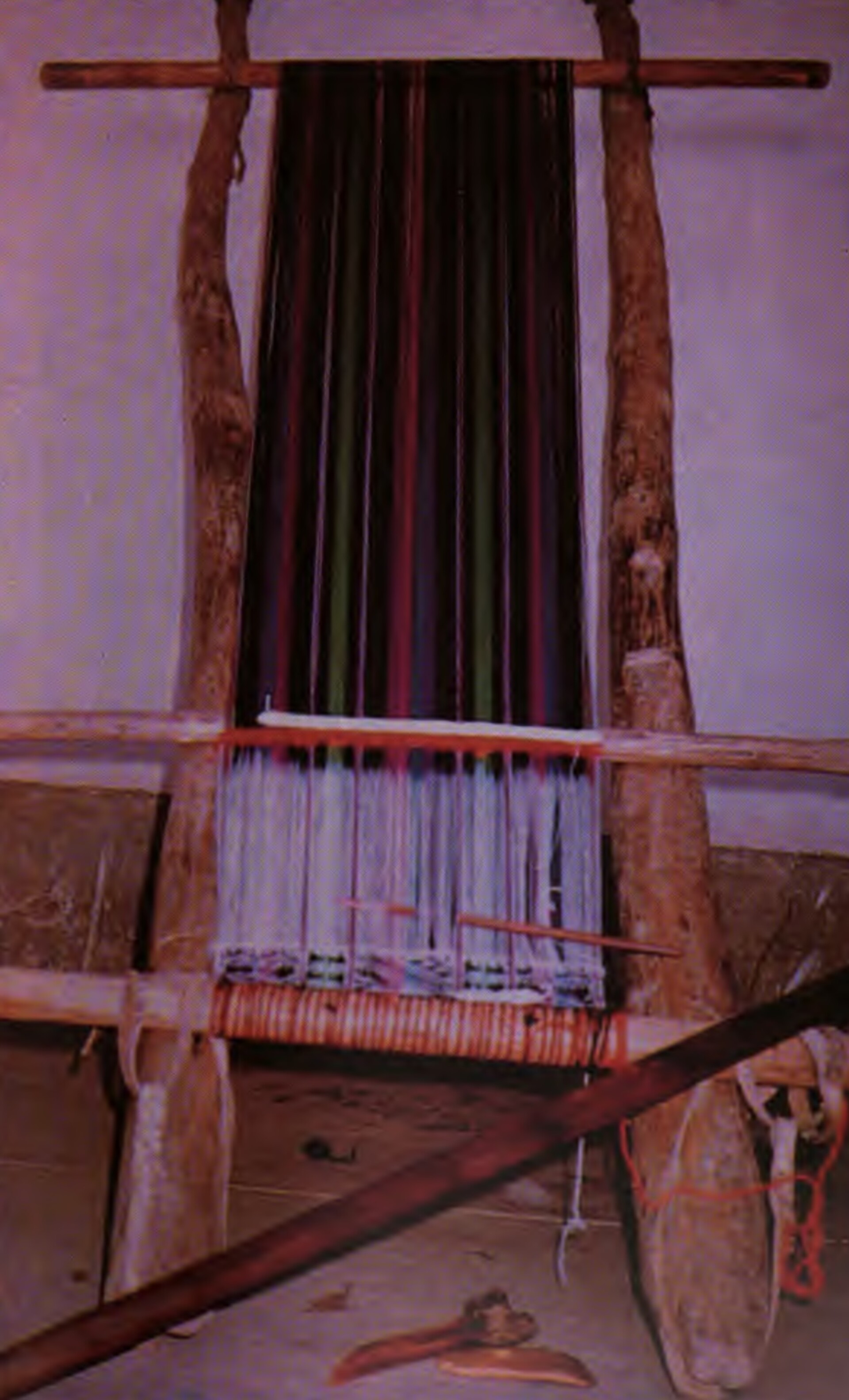

Tarabucan textiles have pallay stripe motifs. Ak’su or overskirt worn by woven over their dresses pinned at the waist, have a black body with elaborate pallay stripes at the border. These ak’sus have a number of natural elements woven into it. The black region is plain weave and symbolises pampa or plains. Other terrestrial elements include mayu k’inku or zigzag river motif, and valley or keshwa. Celestial elements include ch’aska (Venus) and kuwichi (rainbow). Among plants or flora the common ones are t’ikita (little flower), kuti t’ika (the bud of a second flower after the first one has dried up), coco (seed of a fruit), and palma or a palm tree. Fauna motifs include caballo con bandera (horse with flag), llama, taruka (deer), vizcacha( like chinchilla), gallina (hen), yutu(partridge), and condor. They also weave motifs of birds with a worm or a flower in their mouths. Sometimes ak’sus can also have humanoid motifs in it.
Textiles with various motifs described above.
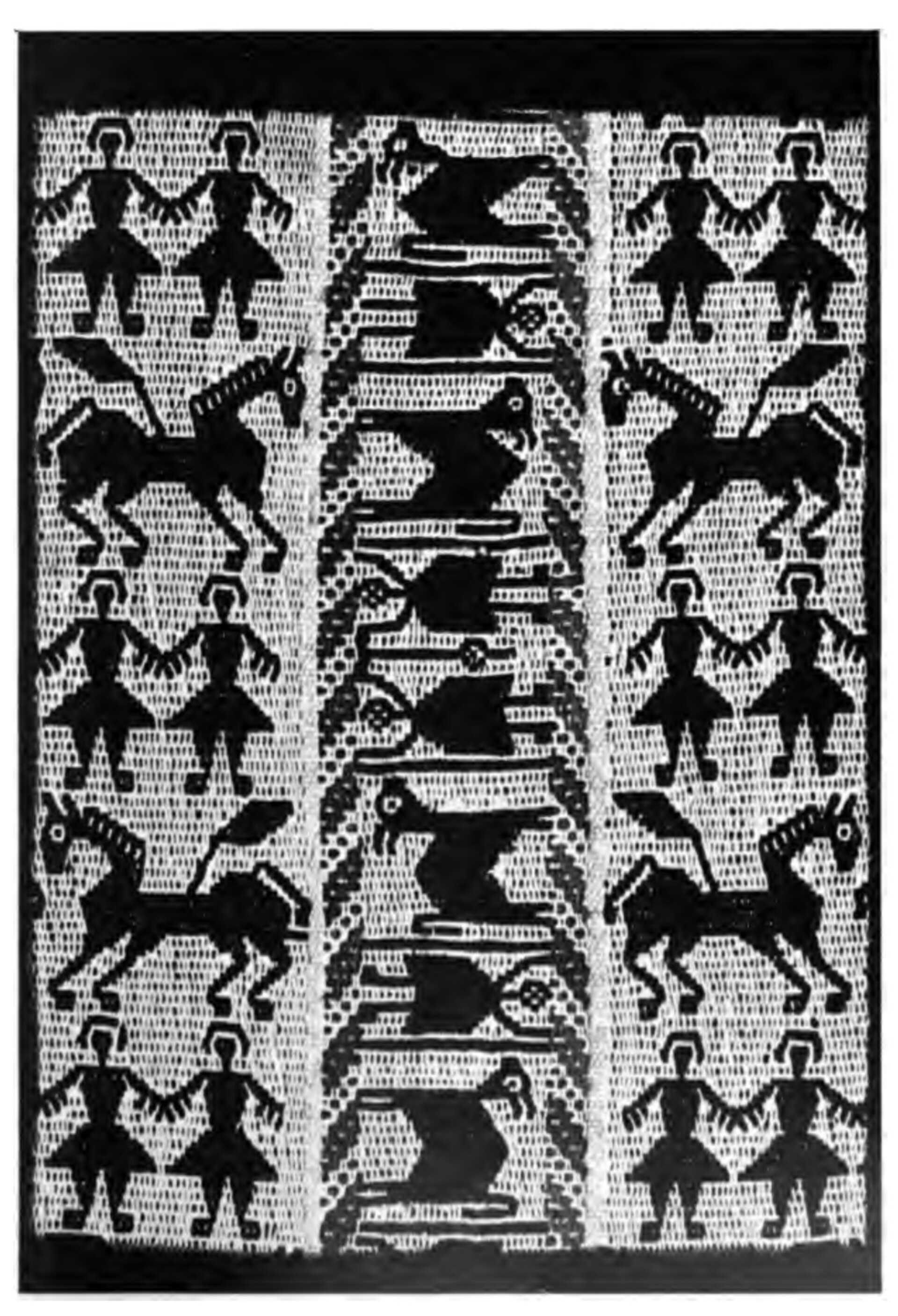
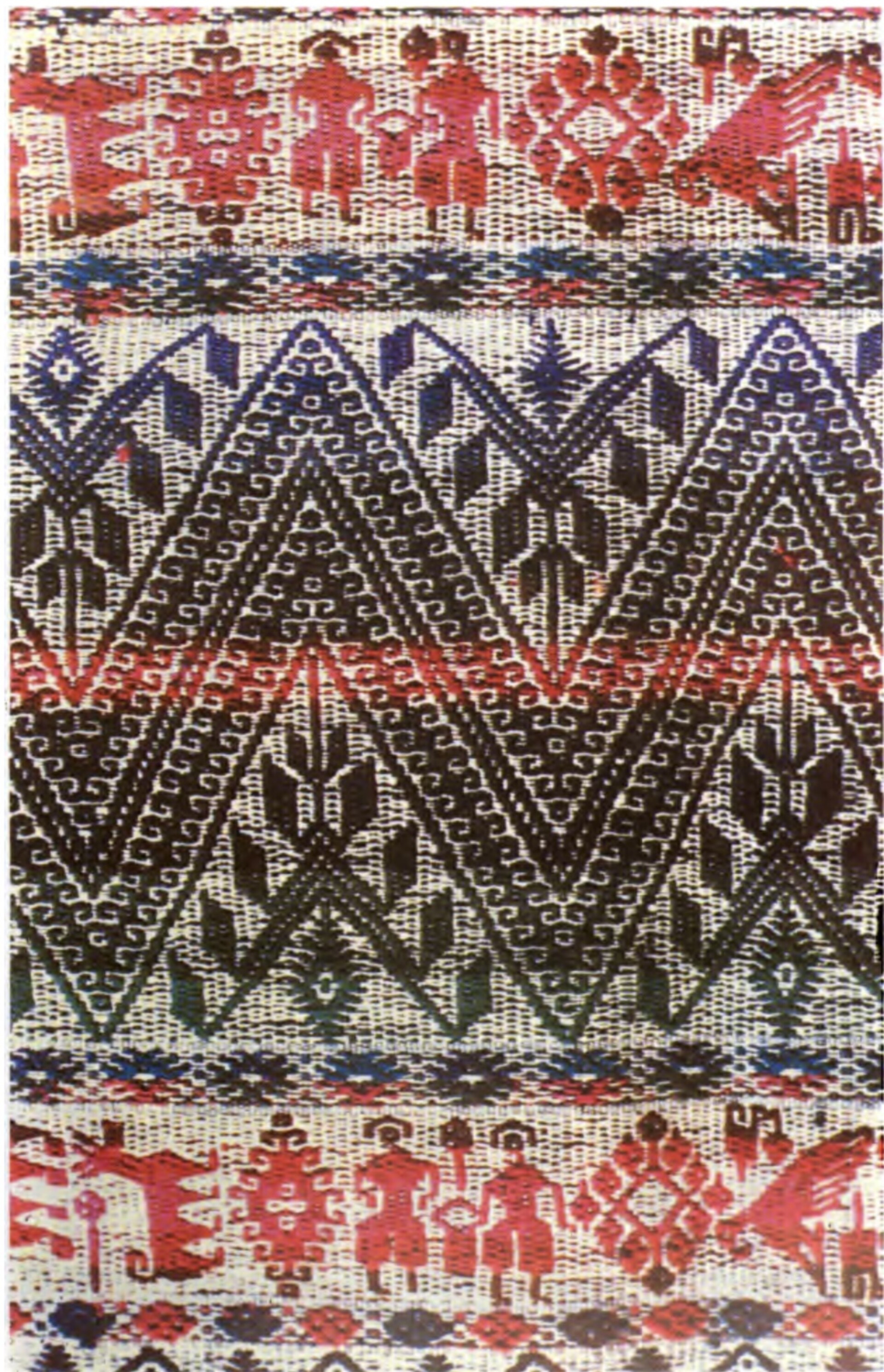
After reviewing the list of motifs, it is conclusive that Tarabucans weave what they see in their natural environment. They derive inspiration from flowers, plants, animals and landforms like plains and valleys. However, one could inquire why they use the rainbow and the star Venus but not the sun or the moon for the motifs. Not just this, it is also strange how they weave plains and valleys but omit mountains. Motifs differ in meaning from community to community. The Quechua people worship rainbows while for Aymara people it is a symbol of illness and is feared. Some motifs are specific to communities. An identical bird motif is called yuta in the Candelaria area and a sacha pulki around Presto. In the Candelaria region, an octagon with a stem is called t’itika and a ch’aska in Tomoroco. The mayu k’inku or zigzag river and ch’aska ( Venus – diamond with rays motif) are common in Tarabuco. However the same ch’aska motif depending on the size and placement can be also called a t’ikita (little flower). The form of the same motif also depends strongly on the weaver.
Variations of the ch’aska motif

Variations of mayu k’inku motif
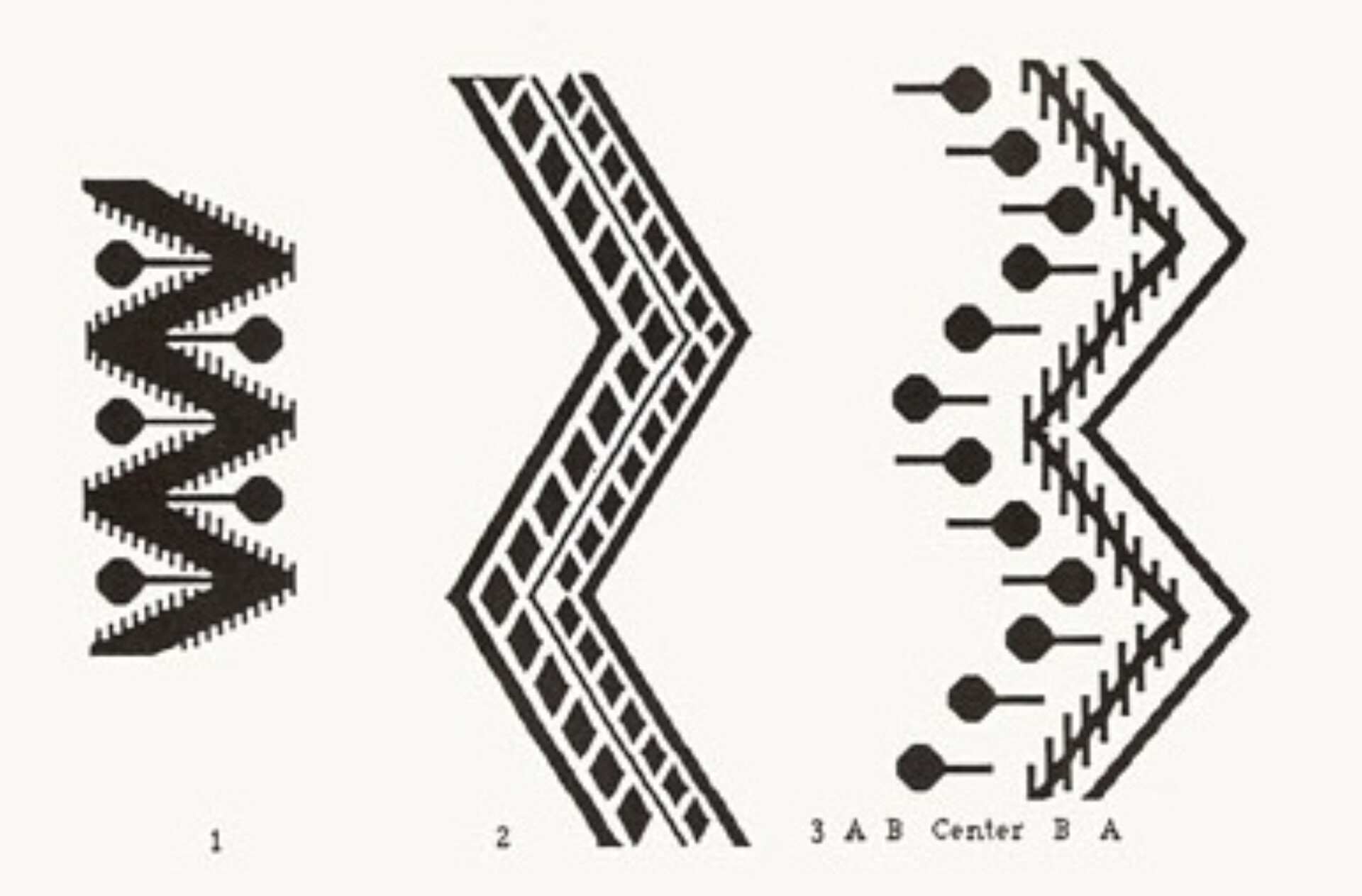
References
Martinez, G. M. (1997, December 8). Textiles Tarabuco. Repositorio. https://repositorio.iica.int/bitstream/handle/11324/18256/BVE21078263e.pdf?sequence=1&isAllowed=y
Meisch, L. A. (1987). Andean aesthetics : textiles of Peru and Bolivia (1987). The Arts Collection. https://digicoll.library.wisc.edu/cgi-bin/Arts/Arts-idx?type=div&did=Arts.AndeanTex.i0010&isize=M
